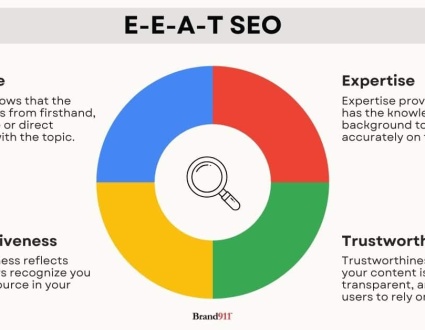
Want to make a lasting impression in just one sentence? That’s the power of a strong personal brand statement.
It tells people who you are, what you do, and why they should care—fast.
Whether you’re building a business, job hunting, or building a personal brand from scratch, a statement helps you stand out in a clear, memorable way.
In this guide, you’ll learn:
- What a personal brand statement is
- Why it matters
- Where to use it
- How to write your own
- Common mistakes to avoid
- Real examples to inspire you
Let’s get right to it.
What Is a Personal Brand Statement?
A personal brand statement is a short, clear summary of what you do, who you help, and what sets you apart.
Think of it like a tagline for your career or reputation.
Most are 1–2 sentences long. They’re meant to grab attention fast and make people want to learn more.
You can write it in first person for resumes, social media, and networking:
“I help startups turn complex ideas into clear marketing strategies.”
Or use third person for websites, bios, and press:
“Alex Rivera is a UX designer who helps mission-driven brands build intuitive digital experiences.”
The best personal brand statements are specific, confident, and easy to remember.
Why a Personal Brand Statement Matters
A strong personal brand statement helps you stand out in a crowded space.
It shows people what you do and why you’re worth paying attention to.
Here’s why it matters:
- It helps you stand out. You’re not the only one in your field. A sharp brand statement makes you more memorable.
- It communicates your value instantly. People don’t have time to dig. Your brand statement delivers the point fast.
- It builds recognition and trust. A clear, consistent message reinforces your credibility and improves your brand reputation.
- It works everywhere. Use it in resumes, bios, LinkedIn, networking, or even when introducing yourself (or re-introducing yourself after a rebrand).
If you want to grow your career or business, start with a statement that speaks for you. It also helps you rank for your name in search and control what people see first.
Where to Use It
Once you’ve written your personal brand statement, use it everywhere people find you.
Some top spots:
- LinkedIn headline and bio. Show up with clarity in search and make connections faster.
- Resume or portfolio intro. Hook hiring managers or clients with a quick summary of who you are.
- Website homepage or About page. Lead with your brand statement to set the tone for your personal site or portfolio.
- Instagram or Twitter/X bios. Keep it short and strong. Your statement helps define your online presence.
- Business cards or email signatures. Add a memorable line that tells people exactly what you’re about.
- Networking conversations. Say it out loud when someone asks, “So, what do you do?”
Wherever people meet you, online or in person, your brand statement should follow.
How to Write a Personal Brand Statement
Follow these steps to create a clear, effective personal brand statement that works across platforms.
1. List your top skills and qualities
Start with what you’re best at. This gives your statement a strong foundation.
- What do people regularly ask you for help with?
- Which strengths make you successful in your work?
- What traits do others often use to describe you?
Be honest with yourself. Your brand should reflect your real strengths, not just the ones that sound impressive.
2. Define your target audience
Your brand statement isn’t for everyone. It’s for the people you want to attract.
- Who do you serve—clients, hiring managers, team leads?
- What kind of industries or communities are you part of?
- Are you speaking to beginners, experts, creatives, or executives?
Tailor your message to resonate with them directly. That’s how you stand out.
3. Explain the value you provide
Go beyond your job title. What real results do you help people achieve?
Examples:
- “I help nonprofits grow their donor base through storytelling.”
- “I coach designers to land remote jobs and freelance with confidence.”
Your value is what makes people want to work with you, follow you, or hire you. A great statement supports your broader reputation marketing efforts.
4. Highlight what makes you different
What’s your edge? Think about what separates you from others in your space.
- Do you work in a specific niche?
- Do you bring a rare mix of skills?
- Is your approach different from the norm?
It doesn’t have to be flashy. Just make sure it’s true and relevant to your audience.
5. Keep it short
1–2 sentences is all you need. Anything longer waters down the message.
A great statement should be:
- Easy to say out loud
- Clear at a glance
- Memorable in a crowd
If it takes a paragraph to explain, it’s not ready yet.
6. Show your personality
Tone matters. Don’t be afraid to write how you speak, as long as it fits your audience.
Examples:
- Friendly and casual for creatives or social bios
- Professional and focused for resumes or LinkedIn
- Quirky or bold if that’s part of your personal brand
Your voice is part of what makes your brand unique. Use it.
For inspiration, check out these self-branding ideas that reflect personality and purpose.
7. Align with your goals
Think about where you’re headed, not just where you are now.
- Looking for new clients? Focus on the results you deliver.
- Applying for jobs? Highlight the skills you want to keep using.
- Shifting fields? Focus on transferable strengths.
Your personal brand statement should support your next move.
8. Update regularly
Your brand evolves. So should your statement.
Check in every few months:
- Does it still reflect what you do?
- Are you serving the same audience?
- Have your goals or strengths changed?
Keep it current. A clear and accurate statement builds trust.
10 Personal Brand Statement Examples (by Strategy)
Here are 10 personal brand statement examples based on different approaches. Use them as inspiration when writing your own.
With Results
“I help eCommerce brands grow their revenue by 30% through conversion-focused copy.”
Results build credibility. Add numbers when you can back them up.
With Specific Services
“I design accessible websites for nonprofits that need clean, functional design on a tight budget.”
Mention what you offer, who it’s for, and how it helps.
With Action Verbs
“Let’s simplify your finances so you can focus on what matters.”
Starting with a verb adds energy and creates a collaborative tone.
As a Question
“Ready to turn your idea into a bestselling course?”
A question invites engagement and speaks directly to your audience.
Short and Memorable
“Clear words. Better conversions.”
Sometimes, the simplest lines are the most powerful.
Audience-Centric
“Helping busy founders scale their business without burning out.”
Make your audience the focus. Show them you understand their world.
Goal-Focused
“I teach creatives how to build profitable freelance businesses.”
Center your statement on what your audience wants to achieve.
With Personality
“I’m a data nerd who loves turning chaos into clean, automated systems.”
Show your tone. A bit of voice makes your brand more human.
Social Media Callout
“Building scroll-stopping content for small brands @reelcrafted.”
Use your handle to drive traffic to your social platforms.
Concise and Direct
“Project manager delivering smoother launches and faster timelines.”
No fluff. Just what you do, who it’s for, and why it matters.
Mistakes to Avoid
A strong statement helps you avoid several personal branding mistakes.
Being too vague
Saying something like “Helping people grow” doesn’t tell us what you actually do, who you help, or how.
Make it clear whether you’re a coach, a consultant, a designer, or something else.
Instead: “I help new managers build confident leadership skills through 1:1 coaching.”

Overusing buzzwords
Words like “innovative,” “dynamic,” or “cutting-edge” don’t mean much on their own.
They make your statement sound like everyone else’s.
Instead, describe real skills or outcomes: “I create visual identities that help wellness brands increase engagement by 30%.”
Making it all about you
Don’t just list your title or background. A brand statement isn’t your bio.
Instead, focus on the results you deliver or problems you solve for others.
Example to avoid: “I’m a marketing specialist with 10 years of experience.”
Better: “I help ethical brands grow through values-based content strategy.”
Trying to be too clever
Wordplay, puns, or overly abstract statements can confuse your audience.
If people have to ask what you mean, it’s not working.
Keep it straightforward and clear.
Bad: “Bringing brilliance to the brandscape.”
Better: “I help early-stage startups create brand identities that stand out.”
Writing a paragraph instead of a statement
A brand statement isn’t a bio. It should be short enough to remember and repeat.
Aim for one or two clear, confident sentences—no more.
Copying someone else’s voice
If it doesn’t sound like you, people will notice.
Avoid pulling exact phrases from other people’s statements or templates.
Use your own tone, whether that’s warm, quirky, bold, or professional.
Example: Instead of “Helping high-level professionals unlock their true potential,” try something that sounds like you:
“I coach senior leaders who want to communicate clearly and lead with confidence.”
Final Thoughts
A strong personal brand statement helps people understand who you are and why they should remember you. It works everywhere (online, in person, on paper) and sets the tone for your reputation.
Want help writing yours? We can do it for you.
Key Takeaways:
- Keep it to 1–2 sentences that say what you do, who you help, and how you’re different
- Use it on LinkedIn, your website, resumes, and social media
- Avoid buzzwords, vague language, and copy-paste templates
- Focus on the value you bring, not just your job title
- Your brand evolves, so keep your statement updated
Need a statement that works for you across platforms? Get help with our personal branding services.
FAQ
How long should a personal brand statement be?
Keep it short, about 1 to 2 sentences max. It should be easy to read, say, and remember. Aim for clarity, not detail.
Can I use the same statement everywhere?
Yes, but feel free to tweak the tone. Use a more casual version for social media and a more polished one for your resume or LinkedIn.
First-person or third-person?
Use first-person (“I help…”) for personal bios or networking. Use third-person (“She helps…”) for websites, press features, or speaker profiles.
What makes a good personal brand statement?
A good personal brand statement is:
- Specific and clear
- Focused on your audience’s needs
- Unique to you
- Easy to understand
Honest and aligned with your goals
About us and this blog
We are a digital marketing company with a focus on helping our customers achieve great results across several key areas.
Request a free quote
We offer professional SEO services that help websites increase their organic search score drastically in order to compete for the highest rankings even when it comes to highly competitive keywords.
Subscribe to our newsletter!
More from our blog
See all postsRecent Posts
- How to Do a Content Gap Analysis December 30, 2025
- How to Distribute a Press Release (Without Wasting Time or Money) December 23, 2025
- What Is SEO Content? A Comprehensive Guide December 18, 2025













Recent Comments